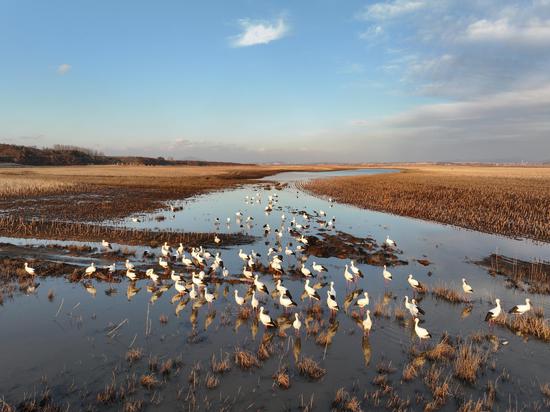
(Photo/China News Service)
A fossil enthusiast recently discovered a fossilized tooth dating back 270 million years from a petalodont (petal-toothed) shark in the mountains of Qujing, Southwest China's Yunnan Province. Experts said this find holds significant importance for studying marine biodiversity in the Permian period in southwestern China and for analyzing paleoenvironmental indicators, the China News Service reported on Tuesday.
“This fossilized tooth found amid an assemblage of marine fossils including bryozoans, brachiopods, and crinoids indicates that the Qujing region experienced multiple marine transgressions from the Late Carboniferous to Early Permian periods,” said Gai Zhikun, a research fellow at the Institute of Vertebrate Paleontology and Paleoanthropology, Chinese Academy of Sciences.
“These events interrupted sediment deposition repeatedly, leading to alternating limestone, sandstone, and coal deposits. This phenomenon is a testament to the significant shifts in the landscape of the southwestern plate during the Late Paleozoic era.”
Petalodont shark fossils have previously been found in Europe and the Americas; in 2021, the first petalodont tooth fossil in China was reported in Yangquan, North China’s Shanxi Province.
According to Gai, estimates based on discovered petalodont shark tooth fossils suggest that most petalodont sharks ranged from 3 to 5 meters in length. The tooth found in Qujing is relatively large, suggesting that this petalodont might have reached nearly 6 meters in length, making it one of the larger known species.
“Petalodont sharks are a mysterious and primitive group of cartilaginous fish, primarily dating back between 360 million and 250 million years. Taxonomically, they belong to the Euselachii subclass within cartilaginous fishes,” Gai noted.
The discovery of the petalodont fossil in Qujing extends the known paleogeographic distribution of petalodonts in the Northern Hemisphere, providing further evidence that petalodonts were likely adept at swimming and traveling in the open oceans.


















































 京公网安备 11010202009201号
京公网安备 11010202009201号